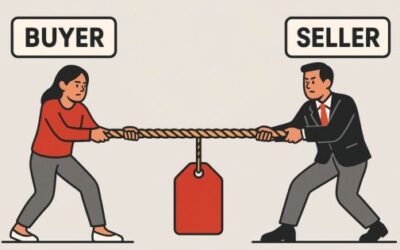Last week we talked about why it’s vital to not use LinkedIn as a cold selling platform. A bunch of you didn’t agree and wanted more on the right way to use LinkedIn and social selling to further your sales. So, here you go.
If you want to use LinkedIn as social selling tool, you should, it can be a great selling tool and it’s one of the best social selling tools for B2B. But you need to use it in a way that brings value to your buyers and your potential buyers. No matter what you sell take the next half hour or so and write down all the business and technical problems that your product or service solves.
Let’s use a lead generation software as an example. What are some of the technical problems that this product solves? It may create a database to store your leads or it may alleviate issues calling people who use traditional phone processes, maybe it speeds up the process. Those are all technical.
What are some of the business problems it solves? It may help generate more leads, maybe it increases the average deal size, maybe it accelerates the sales process, maybe it delivers more revenue. Those are business problems that a lead generation software or business may solve – reduction in revenue, long sales cycle, low or decreasing average deal size.
Once you have this list of business and technical problems take a second and think of all the impacts these problems can have on a business. How do these problems affect the business and where they are trying to go?
Now that you have your technical problems, business problems, and the impacts go write an article, post, create a video about solving these problems. Include why those problems exist, what happens when these problems exist, and finally how to solve those problems. Do this once a week for 12 weeks. This is the important part – every time somebody interacts with one of your posts (like, comment, share) – go to their profile, follow them, and hit that little blue connect button.
Don’t forget to include a short note in your invitation – “I saw you liked my post about this, thank you, if you have any questions or more comments, feel free to reach out!” If they commented on it make sure you go to the comments section and respond, if they ask a question in the comments section – answer it and then connect with them! Do this every week for 90 days and see what happens.
Want Sales Tips Straight to Your Inbox Every Sunday? Join Our Newsletter!
Pay attention to who you are connecting to, who are they, what is their role, why are they interested in what you’re saying? Spark up a conversation and ask them if they have anything else they might be curious about. Ask them if they want more information or if they’re experiencing this business problem. Start engaging these people around the problems that your organization or product solves.
One of the benefits of social selling is that once you start having conversations around the problems, you’re halfway home. We don’t have to send people cold emails or cold LinkedIn connections that say “hey my product does this, can I have 10-15 minutes of your time to tell you more.” You’re already getting their time. It’s in little bits, 2-3 minutes here and there, that adds up! You’re engaging with them week after week after week. It may not be a traditional conversation but you’re giving them all the information you would give them with a traditional call. You are building your credibility gradually. You’re playing the long game.
You’re indirectly putting in the face time with them. Once you have captured their interest, now they’re ready to have a conversation with you. Now they see you as a thought leader or expert with their specific problem. At some point, when they’re ready to solve the problem, they’ll reach out to you and ask if you can solve the problem or how your product or service can help them specifically. Boom, off to the races.
We don’t need to send out spammy emails or LinkedIn connection requests. The art of social selling is engaging with potential buyers by building content that addresses the problems and issues that our prospects have. If you don’t know what those problems or issues are you’ve got some work to do. You can’t sell if you don’t know what problems you solve.
Once you know those, go download the Problem Identification Chart (PIC) and start filling it out. Once you’ve got that done, start writing about how you can address these issues and what the impacts of not fixing these problems can be. Start social selling by providing value and information to your network and potential clients first. Try this social selling strategy and let us know how it goes!
If you or your organization want to start creating value for your buyers and being problem-centric sellers click here to schedule a call with our sales team.




0 Comments